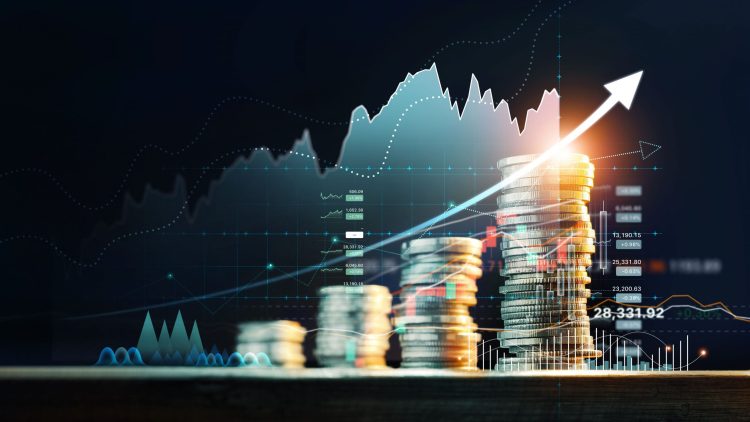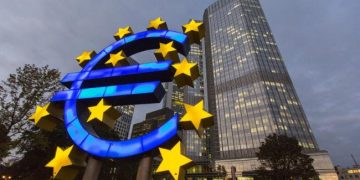Introduction
- Overview of Sustainable Investing: Sustainable investing refers to investment strategies that not only focus on financial returns but also take into account environmental, social, and governance (ESG) factors. The integration of ESG criteria into investment decisions has seen significant growth in recent years as concerns about climate change, social inequalities, and corporate governance have become more pronounced.
- The Rise of ESG Investing: As environmental and social issues have gained attention globally, investors and financial institutions have increasingly shifted toward sustainable investment strategies. This trend is particularly notable in developed economies, but the concept is gaining traction globally.
- Purpose of the Article: This article aims to explore whether sustainable investing is the future of global finance by examining its growth, the factors driving it, its challenges, and its potential to reshape global financial markets. Through this analysis, we will assess how sustainable investing can influence corporate behavior, government policies, and the broader financial system.
Section 1: Understanding Sustainable Investing
- Defining Sustainable Investing: Sustainable investing encompasses a wide range of investment approaches, including socially responsible investing (SRI), impact investing, and ESG integration. These approaches evaluate investments based on how well they align with environmental, social, and governance criteria.
- Socially Responsible Investing (SRI): Focuses on investing in companies that align with specific ethical or moral values, such as avoiding companies involved in tobacco, weapons, or fossil fuels.
- Impact Investing: Investments made with the intention of generating measurable social or environmental impacts alongside financial returns, such as funding clean energy projects or social enterprises.
- ESG Integration: The incorporation of ESG factors into the investment analysis process, assessing how companies manage risks and opportunities related to environmental and social issues.
- Key Components of ESG Investing:
- Environmental (E): Includes issues related to climate change, energy use, pollution, waste management, and natural resource conservation.
- Social (S): Addresses issues like labor practices, human rights, community engagement, and consumer protection.
- Governance (G): Focuses on corporate governance, including board diversity, executive compensation, shareholder rights, and transparency.
Section 2: The Growth of Sustainable Investing
- Market Trends and Size: Sustainable investing has grown significantly in recent years. According to the Global Sustainable Investment Alliance (GSIA), the global sustainable investment market was valued at over $35 trillion in assets under management (AUM) as of 2020, representing more than one-third of global AUM.
- Growth Drivers: Several factors are contributing to the growth of sustainable investing:
- Increased Awareness of Climate Change and Social Inequality: The growing awareness of environmental and social issues among both consumers and investors has prompted a shift toward more sustainable financial strategies.
- Millennial and Gen Z Influence: Younger generations, particularly millennials and Gen Z, have shown a strong preference for investing in companies that prioritize sustainability. These generations are expected to inherit significant wealth and are likely to continue driving demand for sustainable investments.
- Regulatory Pressure: Governments and international organizations are increasing regulations around ESG disclosures and climate-related risks. This is encouraging companies to adopt more sustainable practices and investors to demand more transparency.
- Institutional Support: Large institutional investors, such as pension funds, sovereign wealth funds, and asset managers, have begun incorporating ESG criteria into their investment strategies, further legitimizing the practice.
- Growth Drivers: Several factors are contributing to the growth of sustainable investing:
Section 3: Factors Driving the Growth of Sustainable Investing
- The Role of Climate Change: Climate change has become one of the most significant global challenges, and investors are increasingly recognizing its financial risks. The shift toward sustainable investing is largely driven by the need to mitigate the risks associated with climate change, including physical risks (e.g., natural disasters, rising sea levels) and transition risks (e.g., regulatory changes, shifts in market preferences).
- Carbon Risk and Fossil Fuel Divestment: As concerns over carbon emissions rise, many investors are divesting from fossil fuel companies and industries with high carbon footprints, reallocating capital to renewable energy and low-carbon technologies.
- Green Bonds and Climate Finance: The issuance of green bonds, which are used to finance environmentally sustainable projects, has become a popular tool for raising capital for climate-related initiatives.
- Social Responsibility and Corporate Governance: Social issues such as income inequality, labor rights, diversity, and inclusion have gained prominence in recent years, compelling investors to consider the social impact of their investments.
- Diversity and Inclusion: Companies with diverse leadership teams and inclusive work cultures are seen as more resilient and capable of driving long-term value. Investors are increasingly factoring diversity metrics into their investment analysis.
- Corporate Governance Standards: Poor governance practices, including executive pay discrepancies, lack of board diversity, and insufficient transparency, can lead to financial mismanagement. Investors are increasingly demanding high governance standards to reduce risk and enhance corporate accountability.

Section 4: The Financial Performance of Sustainable Investments
- Do Sustainable Investments Deliver Competitive Returns?: A critical question in sustainable investing is whether ESG-focused investments generate competitive financial returns compared to traditional investments. Research shows that sustainable investments can perform on par with, or even outperform, conventional investments over the long term.
- Risk Mitigation: Companies that focus on sustainable practices often face lower risks related to regulatory penalties, reputational damage, and supply chain disruptions. This risk mitigation translates into long-term financial stability.
- Alpha Generation: Some studies suggest that ESG-focused companies can generate alpha (i.e., excess returns relative to the market) by identifying long-term growth opportunities in emerging sectors, such as renewable energy, electric vehicles, and sustainable agriculture.
- Evidence of Outperformance: Several academic studies and industry reports show that portfolios with higher ESG scores have delivered superior risk-adjusted returns, indicating that sustainability factors can be incorporated into the investment process without sacrificing performance.
Section 5: Challenges and Criticisms of Sustainable Investing
- Greenwashing: One of the biggest challenges in sustainable investing is the risk of “greenwashing,” where companies or funds make exaggerated or misleading claims about their sustainability efforts without making meaningful changes.
- Lack of Standardization: There is no universal standard for what constitutes a “sustainable” investment, leading to confusion and inconsistent labeling of ESG products. Investors may find it difficult to assess the true sustainability of an investment.
- Short-Term Focus: Some critics argue that ESG investing tends to focus too much on short-term goals (e.g., carbon emissions reduction) without adequately considering the long-term economic and social implications of sustainability.
- Balancing Profitability and Purpose: Investors often face the dilemma of balancing financial returns with social and environmental impact. While many sustainable investments align with long-term growth, some sectors may not show immediate profits, making it challenging for certain investors to prioritize sustainability.
- Data and Transparency Issues: ESG data is often inconsistent, incomplete, or difficult to compare across companies and sectors. The lack of standardized reporting makes it challenging for investors to accurately assess the ESG performance of companies.
- Regulatory and Data Discrepancies: Different regions and regulatory bodies have varying standards for ESG reporting, leading to inconsistencies and challenges in comparing ESG data across jurisdictions.
Section 6: The Role of Technology in Sustainable Investing
- Data Analytics and ESG Measurement: Advances in technology, particularly in data analytics and artificial intelligence, have enabled more sophisticated methods for measuring and analyzing ESG factors. Tools such as ESG rating agencies, sentiment analysis, and big data allow investors to assess companies’ ESG performance in real time.
- Blockchain and Transparency: Blockchain technology can increase transparency in sustainable investing by providing immutable records of ESG data, enabling investors to track the sustainability claims of companies with greater confidence.
- AI and ESG Integration: Artificial intelligence is being used to analyze vast amounts of unstructured data to uncover patterns related to environmental, social, and governance performance. This helps investors identify sustainable investment opportunities that may not be immediately apparent through traditional methods.
Section 7: Government Policies and Regulation
- EU Green Deal and Regulatory Frameworks: The European Union’s Green Deal, along with its Sustainable Finance Disclosure Regulation (SFDR), has set a global benchmark for sustainable finance regulation. These policies aim to direct capital toward sustainable projects and ensure that companies and investors are transparent about their ESG risks and opportunities.
- Tax Incentives and Subsidies for Sustainable Investments: Governments around the world are introducing tax incentives and subsidies to encourage sustainable investments. For example, tax credits for renewable energy investments and subsidies for green bonds help make sustainable investments more attractive.
- Global Collaboration on ESG Standards: International organizations, including the UN and the OECD, are working to develop common frameworks for sustainable finance and ESG reporting to ensure consistency and transparency in the market.
Section 8: The Future of Sustainable Investing
- Global Expansion of Sustainable Investing: Sustainable investing is not limited to developed markets. Emerging markets are increasingly seeing the value of sustainability in financing, with countries like China, India, and Brazil implementing sustainable finance initiatives.
- Impact of Climate Change on Financial Markets: As climate change accelerates, investors will increasingly recognize the financial risks associated with environmental factors. This will drive further demand for sustainable investment strategies.
- The Role of Institutional Investors: Large institutional investors, including pension funds, sovereign wealth funds, and insurance companies, will continue to play a critical role in shaping the future of sustainable investing, especially as they manage long-term liabilities and aim for better risk-adjusted returns.
- Shifting Mindsets of Investors: As sustainable investing becomes more mainstream, investors will likely prioritize a holistic approach, balancing financial returns with positive social and environmental impact.
Conclusion
- Summary of Key Insights: Sustainable investing is no longer a niche market but a growing force in global finance. With the increasing focus on environmental, social, and governance factors, sustainable investing has the potential to reshape how capital is allocated across industries and regions.
- Looking Forward: The future of sustainable investing looks promising, with the potential to drive long-term economic growth, create new investment opportunities, and contribute to solving pressing global challenges like climate change and inequality.
- Final Thoughts: While challenges remain, including greenwashing, data transparency, and the balance between profitability and sustainability, sustainable investing is poised to become a cornerstone of global finance, influencing everything from corporate behavior to government policies and investor strategies.



































